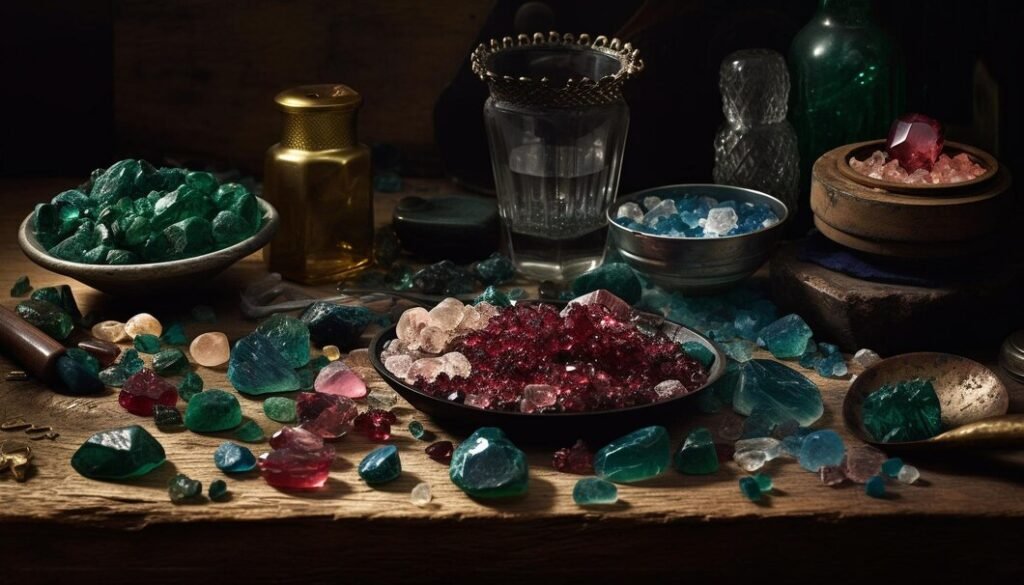
The allure of gemstones has captivated humanity for centuries. These precious stones, known for their beauty, rarity, and symbolism, have been revered as symbols of wealth, power, and even mystical properties. Among the myriad of historical gemstones, one particular stone stands out: the “one gemstone 1665.” This gemstone has intrigued historians, jewelers, and collectors alike, sparking debates and curiosity about its origins, significance, and unique characteristics. In this article, we will delve into the mystery behind one gemstone 1665, exploring its history, cultural relevance, and the fascinating details that make it one of the most remarkable stones of its kind.
The Fascinating Origins of One Gemstone 1665
What is One Gemstone 1665?
The term “one gemstone 1665” refers to a specific gemstone that has been traced back to the year 1665. While it might seem like a simple label, the gemstone carries with it a complex history and deep-rooted significance. This particular stone is believed to be a rare and unique specimen that was discovered during a time when gemstones were highly prized by monarchs, royalty, and collectors. The gemstone is famous not only for its age but also for the mystery surrounding its origins and properties.
The Historical Context of 1665
To fully appreciate the significance of one gemstone 1665, it is essential to understand the historical context in which it was discovered. The mid-17th century was a period of great political, cultural, and scientific change. The world was emerging from the age of exploration, with new territories being discovered and treasures from the East making their way to Europe. It was also a time of significant advances in science, art, and literature, with the works of thinkers like Isaac Newton and Galileo Galilei beginning to shape the modern world.
During this time, gemstones were considered not only objects of beauty but also items imbued with power. Many believed that gemstones possessed magical or healing properties, and they were often used in royal crowns, ceremonial objects, and religious artifacts. The year 1665 marked a time when the demand for gemstones was at its peak, and any discovery of a unique stone would have been met with great excitement and fascination.
The Gemstone’s Physical Properties
What Makes One Gemstone 1665 Unique?
One of the key reasons “one gemstone 1665” has garnered so much attention is the unique properties of the stone itself. While the exact type of gemstone is still a matter of debate among experts, it is believed to be a rare form of quartz, with distinct color patterns and clarity that set it apart from other gemstones of the time. The gemstone’s appearance is often described as a brilliant mixture of colors, with flecks of gold and silver scattered throughout its surface. These patterns are thought to be the result of natural inclusions, which are common in gemstones but rarely create such a striking visual effect.
The stone is also known for its exceptional hardness and durability, making it an ideal candidate for use in jewelry and ceremonial objects. Over the years, many have tried to determine the exact chemical composition of the stone, but its mysterious nature has left many questions unanswered.
The Symbolism Behind One Gemstone 1665
Like many gemstones, one gemstone 1665 is imbued with symbolic meanings. Historically, gemstones were often linked to specific powers or properties. For instance, emeralds were believed to promote healing and love, while sapphires symbolized wisdom and loyalty. Similarly, one gemstone 1665 is thought to represent strength, protection, and prosperity. Those who possessed it were often regarded as being blessed with good fortune, and it was believed to protect its owner from harm.
In the 17th century, gemstones were not only valued for their beauty but also for their potential to bring good luck or ward off evil spirits. It is likely that one gemstone 1665 was viewed in much the same way, adding to its mystique and desirability.
The Journey of One Gemstone 1665 Through History
The Discovery of One Gemstone 1665
The origins of one gemstone 1665 are shrouded in mystery, with no definitive records indicating when or where it was first discovered. Some historians suggest that the gemstone may have been unearthed in the Far East, where many precious stones were found and traded during the period. Others believe it may have been discovered in the mines of South America, which were known for yielding high-quality gemstones during the colonial era.
What is certain, however, is that the gemstone made its way to Europe at some point in the mid-17th century, where it became a highly sought-after item among the wealthy elite. Its rarity, combined with its purported mystical properties, made it an object of desire for collectors, jewelers, and even royalty.

The Stone’s Role in Royal Courts
As was the case with many other gemstones, one gemstone 1665 soon found its way into the courts of European monarchs. Kings and queens of the time were known for their love of fine jewelry and often commissioned custom-made pieces that featured rare gemstones. It is believed that one gemstone 1665 was incorporated into a series of crowns, necklaces, and rings worn by royalty. These pieces were not only symbols of wealth and power but also served as a form of protection, as the gemstone was thought to possess mystical properties that could safeguard the wearer.
One notable account involves King Louis XIV of France, who was said to have acquired a gemstone similar to one gemstone 1665 during the height of his reign. This particular stone was believed to be a gift from an ambassador from India, where gemstones were revered for their supposed spiritual benefits. Whether or not this stone was actually one gemstone 1665 remains unclear, but the connection between the two is often cited in historical texts.
The Continued Fascination with One Gemstone 1665
The Modern-Day Search for One Gemstone 1665
Despite its rich history and cultural significance, the exact whereabouts of one gemstone 1665 remain unknown. Over the centuries, the stone has been lost to time, with no known records of its location since the 18th century. However, the legend of the gemstone continues to captivate collectors and gemologists who have spent years searching for any trace of it. Some believe that it was hidden away by its last known owner, while others suspect that it may have been lost during one of the many upheavals that marked the 18th and 19th centuries, such as wars or political revolutions.
Modern technology has also played a role in the ongoing search for one gemstone 1665. Gemologists now use advanced tools to analyze historical gemstones, looking for any signs of the unique properties that would identify the stone. While these efforts have yet to yield any concrete results, they have only added to the gemstone’s mystique.
The Cultural Impact of One Gemstone 1665
Even in the absence of the actual gemstone, the legend of one gemstone 1665 continues to inspire artists, writers, and filmmakers. The stone’s story has been incorporated into various works of fiction, where it often plays a central role in narratives involving treasure hunts, historical mysteries, and epic quests. The idea of a single gemstone with the power to shape history is a compelling one, and its enduring appeal speaks to humanity’s fascination with rare and precious objects.
The Legacy of One Gemstone 1665
The Influence on Modern Gemology
The legend of one gemstone 1665 has had a lasting influence on the field of gemology. Researchers and scholars continue to study the gemstone’s origins and properties, seeking to understand why it became so highly regarded in the first place. The stone has also served as a model for other gemstones that were discovered in the centuries that followed, influencing the way gemstones were categorized and valued.
One Gemstone 1665 as a Symbol of Timeless Beauty
One gemstone 1665, despite its mystery, represents the timeless allure of gemstones and their ability to captivate people across generations. Whether it is viewed as a historical treasure, a symbol of power, or simply a beautiful stone, its legacy endures. As long as gemstones continue to be cherished, the story of it will remain an integral part of the rich tapestry of history, culture, and treasure.
Conclusion: The Enduring Mystery of One Gemstone 1665
The story of it is one of intrigue, mystery, and beauty. This gemstone, with its rare properties and rich history, has captured the imagination of people for centuries. Its legacy lives on, both as a symbol of the past and as a reminder of the timeless allure of precious stones. While its exact origins and current whereabouts may remain unknown, the legend of one gemstone 1665 will continue to captivate collectors, historians, and gemstone enthusiasts for years to come.


